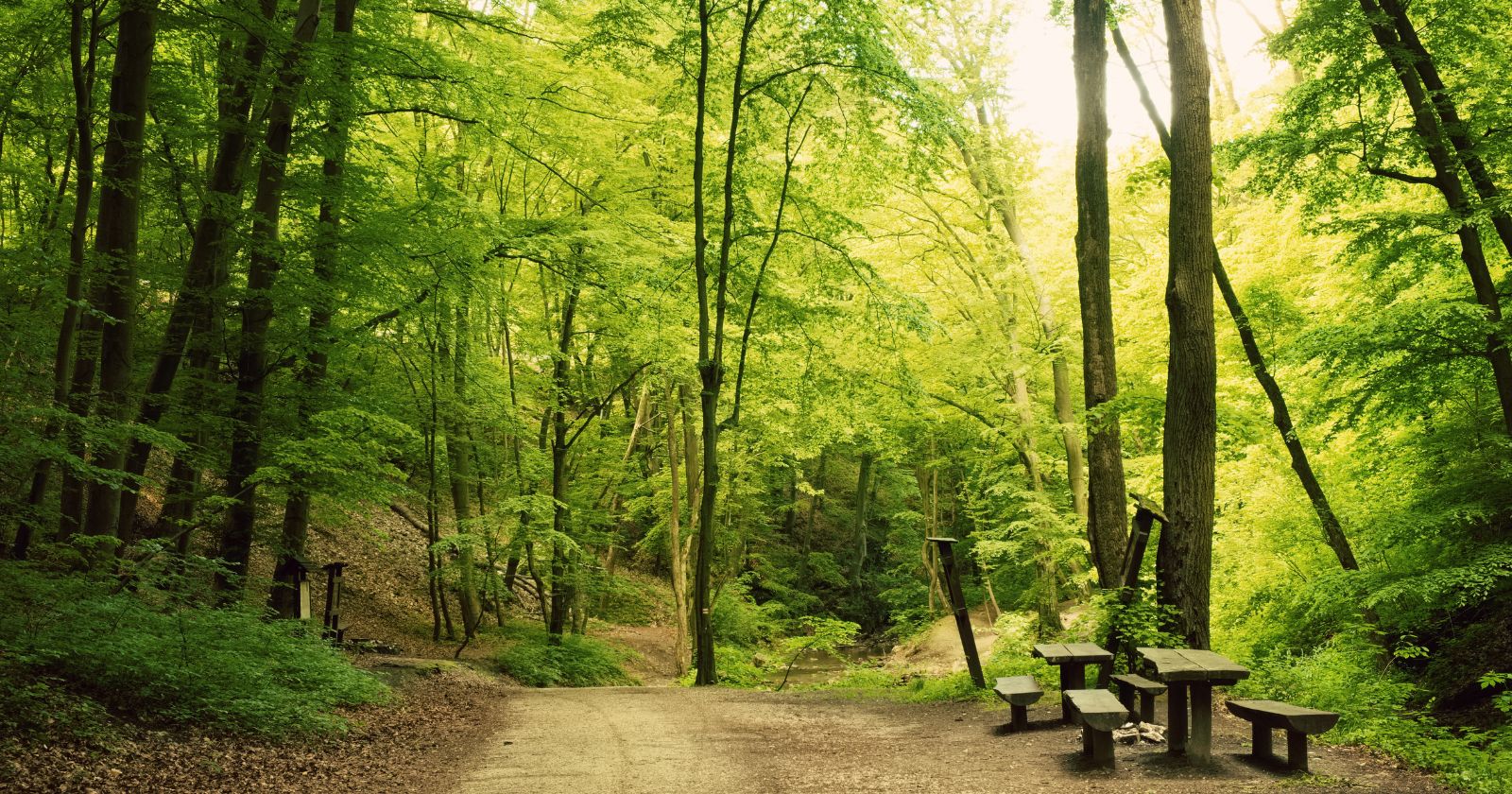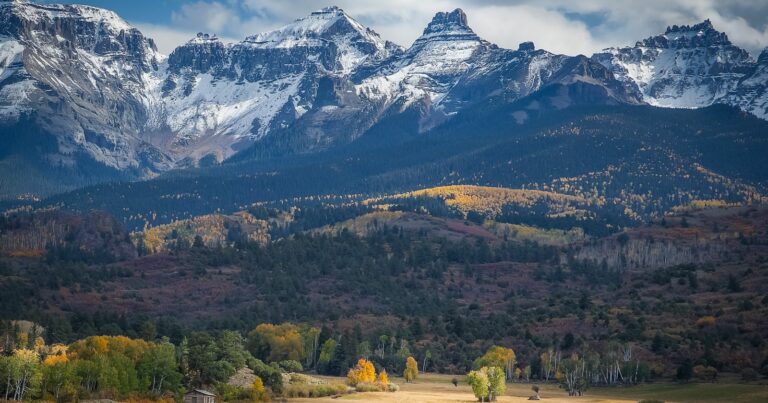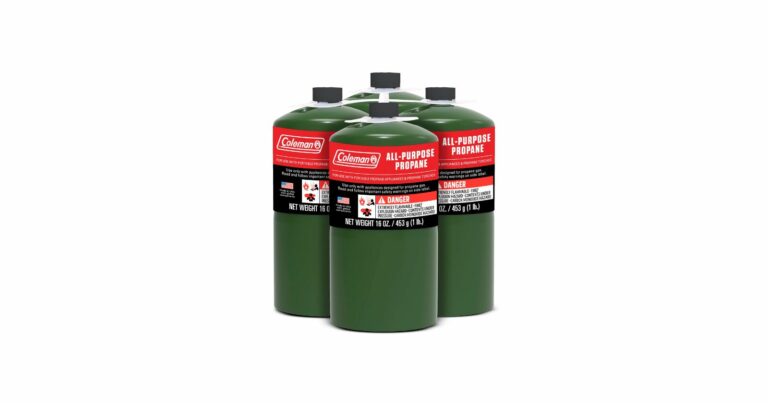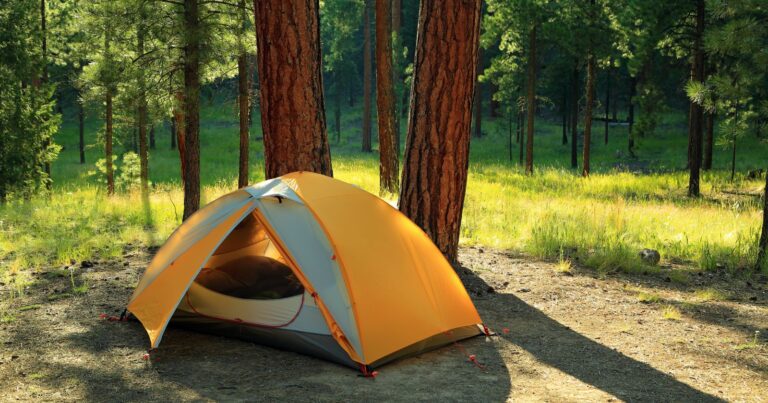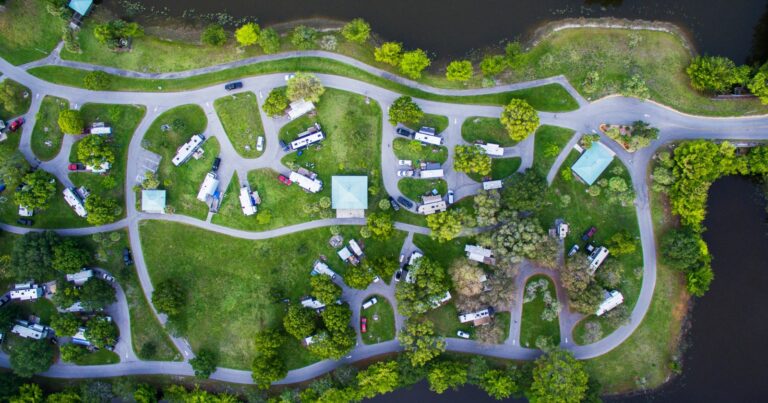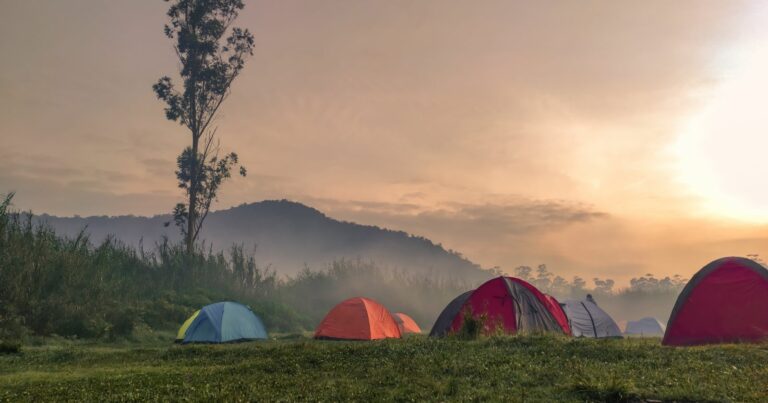Where is the Safest Place to Set Up Camp in the Forest?
Nestled among the towering pines and rugged terrain, you take a deep breath of the fresh, earthy air. You’re ready to embrace the tranquility of camping deep in the forest.
But as the sun begins to set and the shadows lengthen, you realize you need to quickly find the optimal spot to pitch your tent. Safety should be priority number one when determining where to make camp for the night.
Your eyes scan the undulating landscape, searching for the ideal haven. Locating a flat, vegetation-free area will provide stability for your tent and comfort for sleeping. Make sure to choose a spot with good drainage to avoid waking up in a puddle if rain falls overnight.
Also look for protection from the wind, whether it’s a rock wall, dense shrubs, or a stand of trees that can act as a buffer. Positioning your tent in a visible area near, but not too near, a water source also allows you to stay aware and hydrated.
With so many potential hazards in the wilderness, from steep drops to curious bears, picking the right campsite is crucial. As the fading sunlight ushers in the starry night sky, you’ll rest easy knowing you’re nestled in the safest haven. In the morning, you’ll emerge refreshed, ready to greet the wonders of the forest again.
This blog provides key tips to identify the optimal, and most secure, place to bed down in the woods. We’ll cover how to assess drainage, visibility, wind protection, and other factors that impact safety. Use this guide to find your perfect forest camp spot and sleep soundly under the sweeping Milky Way.
Choose a Flat, Clear Area
Your top priority should be finding a flat space clear of rocks, roots, and brush to set up on. This creates a stable, comfortable surface for your tent.
Check the Ground for Bumps, Holes, Etc.
Walk the area first, checking for dips, holes, rocks, thick roots, and other irregularities that could make sleeping difficult. Press down on the surface with your foot to check for soft spots.
Clear Away Any Brush, Plants, or Branches
Remove any brush, plants, or small branches so you have an area of exposed dirt/grass. This prevents lumpy terrain or thorns from poking you through the tent.
Find a Space Large Enough for Your Tent
Make sure you have adequate room for the entire tent footprint, plus a few feet of space around it. Trying to squeeze onto uneven or cramped ground can lead to collapse.
Consider a Natural Clearing for Easy Set Up
Opt for naturally open areas like glades or meadows surrounded by trees rather than dense brush. This takes less work to clear and flatten.
Pick a Spot with Good Drainage
To avoid waking up flooded or in a giant puddle, drainage is key when selecting where to pitch your tent.
Avoid Low Points and Depressions
Don’t set up in dips or holes in the terrain where water will pool during rains. Even slightly uneven ground can lead to seepage under your tent.
Check Areas Prone to Flooding
Lookout for low-lying zones near bodies of water that are prone to flooding when water levels rise. Also avoid dry creek beds.
Elevate Tent Platform in Wet Areas
If the area is damp, place tents on raised plastic or wood platforms to prevent water from seeping up from the ground.
Dig Small Trenches to Divert Water Flow
For minor drainage issues, you can divert water by digging narrow trenches around the tent perimeter to direct the flow elsewhere.
Find Protection from the Wind
Strong winds can damage tents, knock over poles, and keep you up all night. Seek shelter from the elements.
Use Natural Barriers Like Rocks or Hills
Position your tent behind boulders, rock walls, hills, or tree stands. These act as buffers against powerful gusts.
Avoid Open Areas with No Windbreaks
Open plains or fields provide no protection against driving winds. Seek coverage along tree lines or small clearings in forested areas instead.
Angle Tent to Lessen Wind Impact
If no natural barriers exist, angle the narrow dimension of your tent into the wind rather than the broad side for better wind resistance.
Weigh Down Tent Corners with Heavy Items
Use rocks or gear bags to weigh down the corners of tents in windy areas. This prevents billowing and collapse.
Find a Spot with Good Visibility
Choosing a campsite with good visibility in all directions helps you spot potential dangers and stay aware.
Don’t Pitch Tent at the Bottom of Slopes
Avoid camping at the base of hills or slopes where your view is obstructed. This prevents spotting threats like falling rocks or trees.
Place Tent Near, But Not Right Next To, Tree Lines
Trees provide visibility coverage while allowing you to see beyond the immediate area around your tent site.
Pick Areas with Limited Blind Corners/Spots
Survey the site for blind spots where you lose visibility, like large rocks or dense brush. Threats could emerge from hidden areas.
Set Up in a Natural Clearing for 360° Views
Clearings in forests surround you with better sight lines to see wildlife or other hazards approaching your camp.
Consider Proximity to Water Sources
While being near water is convenient, avoid camping right next to bodies of water which poses other risks.
Don’t Set Up Below River Banks or Steep Hills
Pitch your tent away from potentially dangerous terrain like loose river banks or steep, crumbly hills. Erosion or landslides can occur.
Avoid Areas Prone to Flash Flooding
Be aware of dry creek beds or campo sites at canyon bottoms that are prone to dangerously fast flash flooding during storms.
Stay 100-200 Feet Back from Water’s Edge
Camping right at the water’s edge increases flood risks and potential contact with wildlife active near the water.
Locate Freshwater Source for Hydration
Scout local streams, springs, or lakes within a reasonable hiking distance to stay hydrated on longer trips.
Follow Campground Regulations
When camping in state/national parks, follow designated regulations to avoid fines and environmental damage.
Obtain Proper Permits
Research what permits you may need for backcountry camping on public lands. Display as required.
Camp Only in Approved Areas
Strict parks prohibit dispersed camping outside campgrounds. Stick to designated zones or ask rangers for guidance.
Adhere to Night Stay Limits
Many campgrounds impose limits on consecutive nights stayed (usually 14 days). Plan accordingly.
Avoid Camping During Fire Bans
Check current fire restrictions. Total bans prohibit campfires/stoves during extreme conditions.
Practice Leave No Trace Principles
When dispersed camping, follow Leave No Trace guidelines to minimize your impact on the environment:
- Pack out all trash
- Use existing trails whenever possible
- Avoid digging trenches around tents
- Refrain from removing plants/trees or defacing rocks
- Properly dispose of human waste away from water sources
- Put out fires completely before leaving camp
Stay Vigilant When Camping in Bear Country
If camping in bear territories, take extra precautions with your campsite selection and food storage. Look for sites with good visibility and avoid dense brush. Hang food and scented items from trees far away from tents. Make noise when moving around to avoid surprising bears. Know bear safety tips like standing your ground, not running away, and using bear spray. Sites near high bear activity may require cannisters to securely store food.
Pick the Best Spot for a Peaceful Forest Camping Experience
As you survey the forest landscape for the perfect pitch, keep these safety factors in mind. Seek out flat, dry, and wind-protected areas with good visibility and access to water. With an optimal camp location, you’ll enjoy restful nights and adventures exploring all the forest has to offer. Just be sure to follow any area-specific rules and camping ethics.
Now you have the knowledge to identify prime real estate for your tent or trailer. Get out there and claim that serene camp spot nestled among the pines. Sleep well and dream of the blazing campfire, starry skies, and mountain air that await you in the wilderness.

